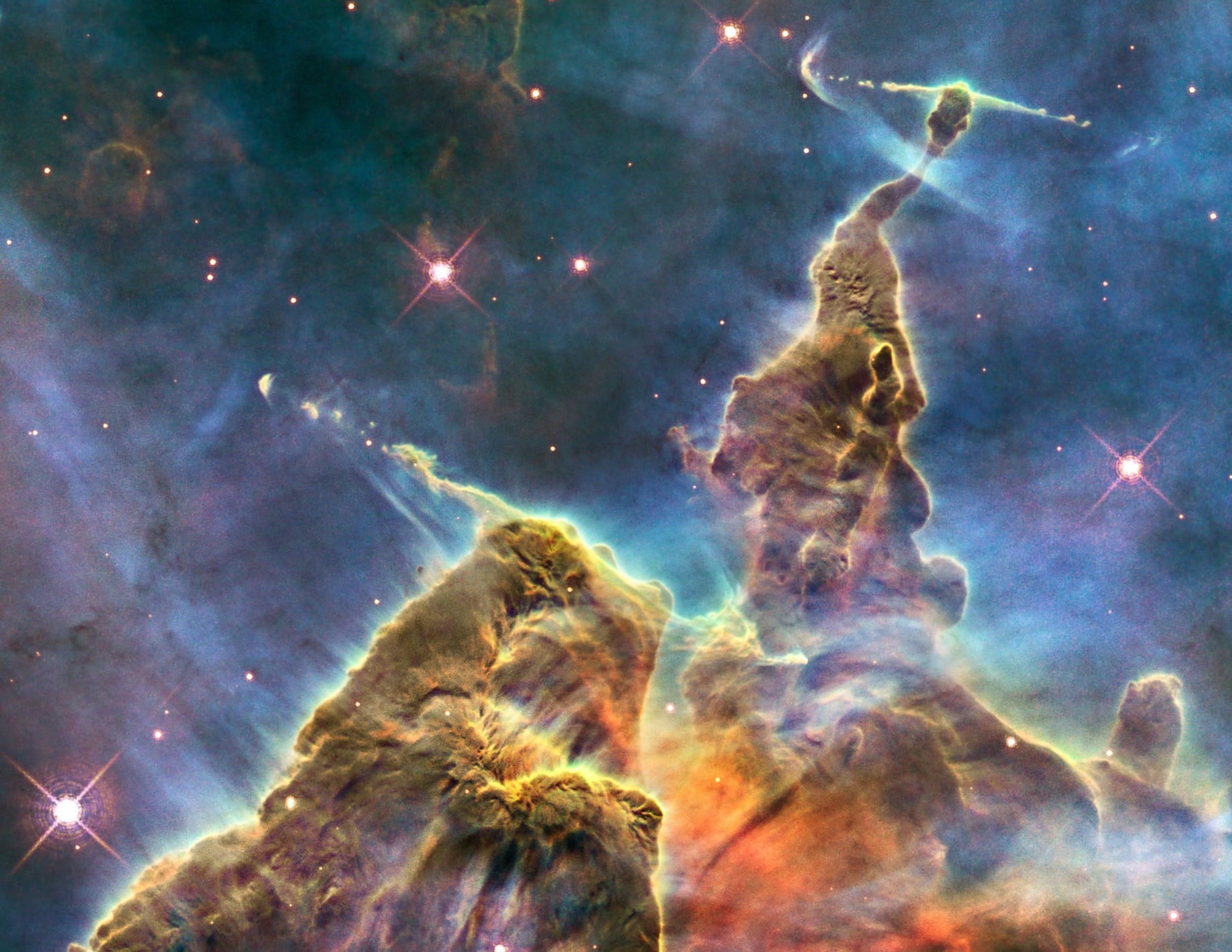Is There Life on Other Planets? This Colombian Astrophysicist Aims to Find Out
By Ruta N -
Relief, ecstasy, excitement: at Tierras, an astronomical observatory in Arizona, a Colombian astrophysicist has just proven that the telescope she designed and rebuilt with her own hands can help her see the stars. Frustration, insecurity, expectation: the telescope’s lenses are not aligned as they should be.
After the “eureka moment” of capturing a photo of a star cluster, comes the realization that the image quality “is horrible” and the reminder that science is about challenging one’s beliefs and skills, testing, failing, starting over, and trying again until finding a solution. And since science is her expertise, she rolls up her sleeves and gets to work.
Juliana García-Mejía is 27 years old—the same age as the telescope she is using to carry out her Ph.D. thesis at Harvard—and she has spent four and a half years working to answer a fundamental question. Leading the design of an observatory, collaborating as a team in a near-choreographed effort to build a new instrument, packing and unpacking an entire lab, loading and unloading lenses, installing them on a telescope, aligning mirrors, and coding at night to automate it all is just a small fraction of what she must do to address her burning question. But it’s an impressive start.
The question: could there be life on other planets?
She first pondered this as a child, sitting in the coffee-growing mountains of Fredonia, Antioquia, stargazing with her uncle and cousins, playing a game of asking questions about the universe. “That question stayed with me, and it’s the one I’ve decided to dedicate the rest of my life to. I’ve been fortunate to receive an education and work in this field of scientific research to help humanity answer it,” Juliana shared with Ruta N’s Talent team.
For her, “we are incredibly fortunate to live in an era with not only the scientific maturity but also the technological maturity to begin addressing this question.” This technology, in her experience, has materialized in the telescope she uses to locate Earth-like planets—approximately the size of Earth—close to the Solar System but orbiting smaller, redder stars. It also manifests in the code she and her team have written to automate the telescope and analyze its data.
Her excitement (and perhaps her answer) lies somewhere within the tension between those who believe the universe is vast and ancient enough that life must have emerged elsewhere and those who argue that life’s complexity makes it unlikely to arise anywhere else.
Some look to the infinity and complexity of outer space—galaxies, planets, comets, and black holes—while others focus on the infinitude of life and the biological, chemical, and geological processes that led to the emergence of that first protocell. As a young scientist, Juliana acknowledges she has plenty of time to change her mind countless times, but for now, she’s immersed in studying and learning.
Yet, she is certain of one thing: “We are in an absolutely spectacular place in the universe. It’s incredible that you can sit in a garden with green leaves and birds singing behind you. We don’t know yet, but it could be that this is unique in the universe.”
When I Grow Up, I Want to Be Like Juliana
How has Juliana managed to keep alive the question she asked as a seven-year-old to the point of building a career around it? “In large part, it has very little to do with me and much more to do with the environment I grew up in,” she says. Her questions were never silenced or questioned for their practicality. For her, “the role of adults—and of all of us as we grow—is to create environments where curiosity is not extinguished but appreciated. And if the answer is not known, to learn how to use every resource to find it.”
This mindset has helped her enjoy every step of her journey, filled with exciting and fun moments, as well as frustrating and exhausting ones. “In this Ph.D., I’ve had many moments where I’ve had to learn something complex in a short time. Each time, I decide to trust myself, face the problem, and I manage to solve it. I feel that much of learning to manage frustration and the emotions around these challenges is exposure. You have to expose yourself to those kinds of situations,” she says.
The moment she remembers most is when her advisor told her, “This week, I want you to work on writing a robot so you don’t have to stay up all night—the telescope will manage itself.” Although she had programming experience, she knew nothing about automating a telescope. Her first thought was, “What’s he thinking? How does he expect me to do that?” But she accepted the challenge, and while she didn’t finish in a week, she researched and started writing her robot, getting closer to uninterrupted nights of sleep.
“At some point, I realized that all those challenges are manageable. I feel that one of the keys to learning software is dedicating time to it, calming yourself, and breaking the problem into very small pieces,” she says. She recognizes programming as an empowering tool. “Almost all of astrophysics involves software. I spend all day programming,” she adds.
Her advice for those considering astrophysics and programming as a career? “You can learn how to program a telescope to be robotic, point to certain coordinates in the sky every night, and collect data. You can use it to design optics or decide which observations to prioritize based on weather and location. Everything in astronomy today involves software, software development, and code.”